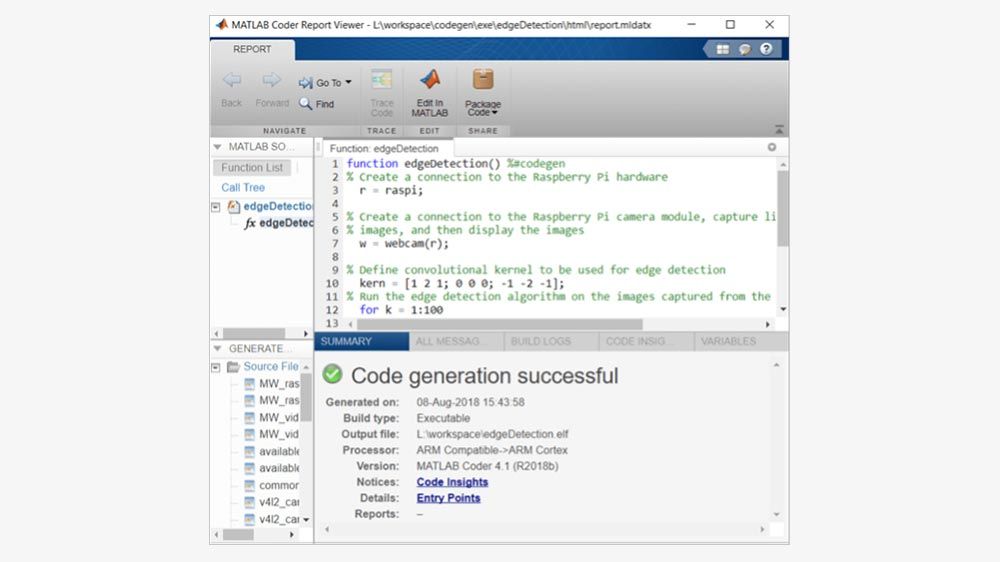Raspberry Pi Support from MATLAB and Simulink
Design, deploy, and interface to Raspberry Pi applications
Design, deploy, and interface to Raspberry Pi applications
Simulink Support Package for Raspberry Pi® Hardware lets you develop algorithms that run standalone on your Raspberry Pi. The support package extends Simulink with blocks to drive Raspberry Pi digital I/O and read and write data from them.
You can now connect to the Raspberry Pi hardware board using Simulink Online.

Install and setup a connection for Raspberry Pi in Windows®, Mac® and Linux® platforms. Deploy the algorithms.

Use device driver blocks to access specific features of your hardware board, such as communication protocols or hardware libraries, that are not included in the default Simulink Support Package for Raspberry Pi Hardware.

Create an interactive dashboard display using the Dashboard Circular Gauge and Knob blocks from the Simulink Customizable Blocks library.

Use Simulink Support Package for Raspberry Pi Hardware to read and receive a 2D lidar scan data of an indoor environment from a ROS.

Predict and monitor the health of a rotating device using a machine learning algorithm. Use the example below for predictive maintenance of any rotating device or piece of equipment so you can fix issues before failure occurs. Use the ThingSpeak platform to view the operational state in the cloud.

Deploy feature extraction and a convolutional neural network (CNN) for speech command recognition on Raspberry Pi. Capture audio from the microphone connected to the Raspberry Pi board and perform speech command recognition.
Raspberry Pi Model
Note: Raspberry Pi 1 Model A, Raspberry Pi Model B, Raspberry Pi 1 Model A+, and Raspberry Pi Zero are currently not supported. Raspberry Pi Pico is supported from the Arduino support package from R2024b.
Supported Platforms: Windows, Mac, Linux
MATLAB Support Package for Raspberry Pi Hardware provides two ways of programming Raspberry Pi applications from MATLAB.

Install the support package, update the firmware, and connect to the hardware.

Use the libraries provided for interfaces like GPIO, Linux system shell, PWM and servo motor control, Raspberry Pi Sense HAT, Raspberry Pi Camera Module, USB webcam, I2C, SPI, and serial interfaces.

Use MATLAB Coder to generate readable and portable C code from your MATLAB algorithm. Compile and execute this code on any processor by manually integrating it with the RTOS, I/O devices, and build tools for your processor.

Classify static image using deep learning on Raspberry Pi.
Generate and deploy code for an image classification algorithm using MATLAB Support Package for Raspberry Pi Hardware.

Deploy an edge detection algorithm on the Raspberry Pi hardware as a standalone executable using MATLAB Support Package for Raspberry Pi Hardware.

Demonstrate audio event classification using a pretrained deep neural network, YAMNet, from TensorFlow™ Lite library on Raspberry Pi.
Raspberry Pi Model
Note: Raspberry Pi 1 Model A, Raspberry Pi 1 Model B, Raspberry Pi 1 Model A+, and Raspberry Pi Zero are currently not supported. Raspberry Pi Pico is supported from the Arduino support package from R2024b.
Supported Platforms: Windows, Mac, Linux